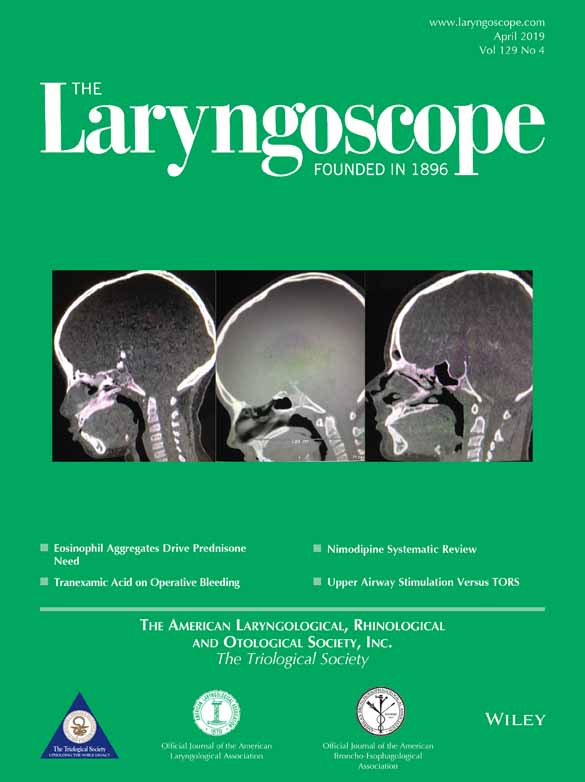Sex bias: Is it pervasive in otolaryngology clinical research?
Presented as an oral presentation at the Triological Society Annual Meeting at the Combined Otolaryngology Spring Meetings, National Harbor, Maryland, U.S.A., April 18–22, 2018.
z.f. gratefully acknowledges support from the Ruth L. Kirschtein Institiutional National Research Service Award Institutional Research Training Grant 5T32DC005360 to the University of North Carolina at the time this research was conducted.
The authors have no other funding, financial relationships, or conflicts of interest to disclose.
Abstract
Objectives/Hypothesis
Recent initiatives highlight substantial sex bias in biomedical research. The objective was to determine whether sex bias is present in otolaryngology and whether sex is appropriately analyzed as an independent variable in otolaryngology clinical research.
Study Design
Literature review.
Methods
We systematically reviewed all 2016 articles in three major otolaryngology journals: The Laryngoscope, JAMA Otolaryngology–Head and Neck Surgery, and Otolaryngology–Head and Neck Surgery. Extracted data included study origin, location, subspecialty, number/sex of subjects, ≥50% sex matching (SM≥50), and sex-based statistical analysis.
Results
Six hundred of 1,209 articles comprising original clinical research were reviewed including 8,997,345,495 subjects (males: 3,898,559,264 [43.3%]; females: 5,095,592,583 [56.6%]; and unknown: 3,193,648 [0.04%]). There were 533/600 (88.8%) studies that included both sexes, eight (1.3%) included females only, five (0.8%) included males only, and 56 (9.3%) did not document participant sex. Only 280 studies (46.7%) analyzed data by sex, and 330 studies (60.7%) had SM≥50. Sex-based statistical analysis and SM≥50 were similar in domestic and international studies (48.7% vs. 42.8% and 60.9% vs. 62%, respectively). Database studies performed sex-based statistical analysis more frequently than single and multi-institutional studies (79.1% vs. 40.4% and 43.4%, P < .00001). Analysis by sex was more frequently performed in head and neck surgery (53.6%) and pediatric otolaryngology (51.3%), whereas SM≥50 was highest in pediatric otolaryngology (86.8%) and otology (82.4%).
Conclusions
Sex bias exists in the clinical otolaryngology literature, with less than half the studies analyzing sex. Acknowledging the intertwinement of sex with disease pathophysiology and outcomes is important. Eliminating sex bias in research and clinical care should become a major focus for otolaryngologists.
Level of Evidence
NA Laryngoscope, 129:858–864, 2019




